GrabCAD

Canal Turbine Blade
by GrabCAD
Last crawled date: 1 year, 11 months ago
Update:
Relevant journal article "Numerical Investigation of the Effect of Leading-Edge Tubercles on Propeller Performance" Read More: https://arc.aiaa.org/doi/10.2514/1.C034845
Relevant publication: http://www.iaeng.org/publication/WCE2018/WCE2018_pp586-595.pdf
My final entry in this challenge, again related to fluid dynamics, it's a concept I am working on (some of my initial designs: https://grabcad.com/library/canal-turbine-blade-structure-wip-1 (May 2015) and https://grabcad.com/library/turbine-blade-15 (May 2015)) (https://grabcad.com/library/tidal-turbine-fuel-water-vawt-in-hawt-mode-fuel-air-1 (January 2016) and https://grabcad.com/library/tidal-turbine-2 (January 2016)).
This turbine blade also utilizes the concept of leading edge tubercles (https://grabcad.com/library/rear-wing-formula-one-dimensions-2, https://grabcad.com/library/modified-rotor-blade-1, https://grabcad.com/library/modified-helical-darrieus-wind-turbine-blade-1 and https://grabcad.com/library/modified-10x4-7-propeller-1) which makes it more aerodynamically efficient than a similar blade without these tubercles.
This blade is 4.76 in in span. The blade is made up of three different hydrofoils at root, mid section and tip. Blade pitch is ~17 degrees at root and ~3 degrees at the tip in an attempt of keeping the AOA constant (as much as possible) because tip velocities are much higher.
You can put these turbines in irrigation canals and they can power nearby villages and all the irrigation equipment etc.
There are many advantages of canal turbines over wind turbines, prominent one's being:
1 No compressibility:
Water is a lot easier to work with as compressibility is rarely a factor as compared to air.
2. Unidirectional flow
Water flows in one direction in a canal so we don't need the complicated pitch and yaw control surfaces as in case of wind turbines.
3. Constant flow rate
We (humans) control water flow rate through canals and it's almost constant throughout the year, so we don't have to worry about blade aero foil design to suit variable/abruptly variable flow rate.
4. Large Electricity potential
Canals are 100s of km long, imagine the electricity potential in the canals. You can put these turbines in irrigation canals and it'll power nearby towns/villages and all the irrigation equipment etc.
5. Higher Power/Discharge Ratio
Water is ~816 times dense (powerful) than air, so for the same discharge (flow) rate we get 816 times more power. Which means more we can make turbine designs that are smaller and easier to manage.
6. Easy maintenance
Fitted less than ~1 m deep inside the canal and can be retracted for maintenance at ground level, making maintenance very easy.
I have no access to a 3D printer, my engineering judgment says these blades must be printable without any problems, after being rotated at 90 degrees around z-axis (based on the SolidWorks co-ordinate system); as shown in r1 render.
Relevant journal article "Numerical Investigation of the Effect of Leading-Edge Tubercles on Propeller Performance" Read More: https://arc.aiaa.org/doi/10.2514/1.C034845
Relevant publication: http://www.iaeng.org/publication/WCE2018/WCE2018_pp586-595.pdf
My final entry in this challenge, again related to fluid dynamics, it's a concept I am working on (some of my initial designs: https://grabcad.com/library/canal-turbine-blade-structure-wip-1 (May 2015) and https://grabcad.com/library/turbine-blade-15 (May 2015)) (https://grabcad.com/library/tidal-turbine-fuel-water-vawt-in-hawt-mode-fuel-air-1 (January 2016) and https://grabcad.com/library/tidal-turbine-2 (January 2016)).
This turbine blade also utilizes the concept of leading edge tubercles (https://grabcad.com/library/rear-wing-formula-one-dimensions-2, https://grabcad.com/library/modified-rotor-blade-1, https://grabcad.com/library/modified-helical-darrieus-wind-turbine-blade-1 and https://grabcad.com/library/modified-10x4-7-propeller-1) which makes it more aerodynamically efficient than a similar blade without these tubercles.
This blade is 4.76 in in span. The blade is made up of three different hydrofoils at root, mid section and tip. Blade pitch is ~17 degrees at root and ~3 degrees at the tip in an attempt of keeping the AOA constant (as much as possible) because tip velocities are much higher.
You can put these turbines in irrigation canals and they can power nearby villages and all the irrigation equipment etc.
There are many advantages of canal turbines over wind turbines, prominent one's being:
1 No compressibility:
Water is a lot easier to work with as compressibility is rarely a factor as compared to air.
2. Unidirectional flow
Water flows in one direction in a canal so we don't need the complicated pitch and yaw control surfaces as in case of wind turbines.
3. Constant flow rate
We (humans) control water flow rate through canals and it's almost constant throughout the year, so we don't have to worry about blade aero foil design to suit variable/abruptly variable flow rate.
4. Large Electricity potential
Canals are 100s of km long, imagine the electricity potential in the canals. You can put these turbines in irrigation canals and it'll power nearby towns/villages and all the irrigation equipment etc.
5. Higher Power/Discharge Ratio
Water is ~816 times dense (powerful) than air, so for the same discharge (flow) rate we get 816 times more power. Which means more we can make turbine designs that are smaller and easier to manage.
6. Easy maintenance
Fitted less than ~1 m deep inside the canal and can be retracted for maintenance at ground level, making maintenance very easy.
I have no access to a 3D printer, my engineering judgment says these blades must be printable without any problems, after being rotated at 90 degrees around z-axis (based on the SolidWorks co-ordinate system); as shown in r1 render.
Similar models
grabcad
free

Canal Turbine Blade Structure WIP
...ubic meter/second)
canal depth: 1.5 m
canal width: 15 m
lift: 3.589 n
drag: 0.179 n
weight: 350 grams (aluminum alloy) (3.43 n)
grabcad
free

Turbine Blade
...9 n
weight: 350 grams (aluminum alloy) (3.43 n)
structure here: https://grabcad.com/library/canal-turbine-blade-structure-wip-1
grabcad
free

stall controlled wind turbine tubercle blades
...des
grabcad
based on bio mimicry, a further improvement to whalepower's tubercle blade design in normal wind turbine blades.
grabcad
free

NASA/Langley HSNLF(1)-0213 Aerofoil Blade
...d
l/d = ~3 at ~20 m/s flow
as used in http://grabcad.com/library/rotor-fan-for-stuff and http://grabcad.com/library/quadrotor--1
grabcad
free

VAWT in HAWT mode (3D Printable)
... or https://grabcad.com/library/vawt-in-hawt-mode-1.
gap clearance for this is 0.025 mm.
feel free to 3d print it just for fun.
grabcad
free

3D Printable High Bypass Turbo Fan Blade (Modified)
...: https://grabcad.com/library/rear-wing-formula-one-dimensions-2 and https://grabcad.com/library/modified-10x4-7-propeller-1 etc.
grabcad
free

Modified Helical Darrieus Wind Turbine Blade
...y problems, if flipped perpendicular to the rotational axis.
baseline blade files are also attached for fluid dynamics analysis.
3dwarehouse
free

Tidal Bulb Turbine
... la rance tidal generating station in france #barrage #bulb #electicity #flow #generation #la_rance #power #tidal #turbine #water
grabcad
free

Horizontal Axis Wind Turbine Rotor
...bcad
diameter about 4.4 ft....
juts for fun!
blade is here http://grabcad.com/library/nasa-langley-hsnlf-1-0213-aerofoil-blade
grabcad
free

Wind Turbine Blade with Leading Edge Tubercles (3D Printable)
... this is just a tiny table top model.
if you decide to print this and someone gets injured or worse, i will not be responsible.
Canal
turbosquid
$10

Canal Bridge
...d model canal bridge for download as 3ds, obj, fbx, and blend on turbosquid: 3d models for games, architecture, videos. (1278583)
turbosquid
free

Canal Bridge
... available on turbo squid, the world's leading provider of digital 3d models for visualization, films, television, and games.
3d_export
$65

ancient canal
...ancient canal
3dexport
simple rendering of the scene file
3d_export
$65

Ancient canal
...ancient canal
3dexport
simple rendering of the scene file
3d_export
$65

Ancient canal
...ancient canal
3dexport
simple rendering of the scene file
3d_export
$65

ancient canal
...ancient canal
3dexport
simple rendering of the scene file
turbosquid
$19

Gran Canal 72
... available on turbo squid, the world's leading provider of digital 3d models for visualization, films, television, and games.
turbosquid
free

Bollard canal plaza
... available on turbo squid, the world's leading provider of digital 3d models for visualization, films, television, and games.
3ddd
$1

Reflex Angelo кровать Gran canal
...reflex angelo кровать gran canal
3ddd
reflex angelo
reflex angelo кровать gran canal
3ddd
$1

Jaga - MINI CANAL B26 WOOD
... om
радиатор jaga - mini canal b26 wood
width: 60 cm
depth: 26 cm
height: 9 cm
сайт производителя:http://www.jaga.be/
Turbine
3d_export
$5

turbine
...turbine
3dexport
it is a turbine to use it in some spaceship
3d_export
$5

turbine
...turbine
3dexport
turbine, with animation included, more texture of it
3d_ocean
$4
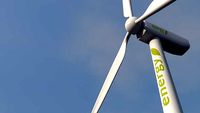
Wind Turbine
...n
and render setup turbine wind
wind turbine, modeled with cinema4d r13 , render setup and textured, custom logo for wind turbine
turbosquid
$1

Turbine
...turbosquid
royalty free 3d model turbine for download as ige on turbosquid: 3d models for games, architecture, videos. (1385242)
3d_export
$40
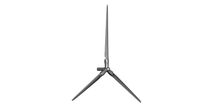
wind turbine
...wind turbine
3dexport
wind turbine
3d_export
$40
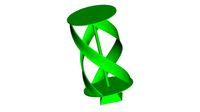
wind turbine
...wind turbine
3dexport
wind turbine
3d_export
$40

wind turbine
...wind turbine
3dexport
wind turbine
3d_export
$40
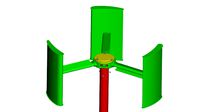
wind turbine
...wind turbine
3dexport
wind turbine
3d_export
$40
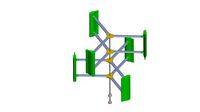
wind turbine
...wind turbine
3dexport
wind turbine
3d_export
$40

wind turbine
...wind turbine
3dexport
wind turbine
Blade
3d_export
$20
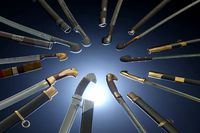
cossack blades
...
3dexport
cossack blades. the set contains 10 blades with a scabbard. each object (blade + scabbard) has a texture of 2048x2048.
3d_export
free

Blade Katarina
...blade katarina
3dexport
blade
turbosquid
free

Blades
...urbosquid
royalty free 3d model blades for download as blend on turbosquid: 3d models for games, architecture, videos. (1544896)
turbosquid
$40

Blade
...royalty free 3d model blade for download as max, obj, and dwg on turbosquid: 3d models for games, architecture, videos. (1222665)
turbosquid
$35

blade
... available on turbo squid, the world's leading provider of digital 3d models for visualization, films, television, and games.
turbosquid
$32

blade
... available on turbo squid, the world's leading provider of digital 3d models for visualization, films, television, and games.
turbosquid
$20

Blade
... available on turbo squid, the world's leading provider of digital 3d models for visualization, films, television, and games.
turbosquid
$15

Blade
... available on turbo squid, the world's leading provider of digital 3d models for visualization, films, television, and games.
turbosquid
$3
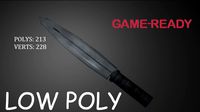
Blade
... available on turbo squid, the world's leading provider of digital 3d models for visualization, films, television, and games.
turbosquid
$2

blade
... available on turbo squid, the world's leading provider of digital 3d models for visualization, films, television, and games.
